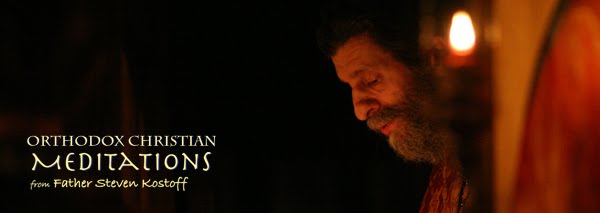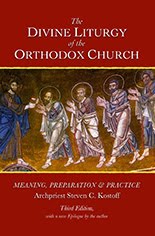Dear Parish Faithful & Friends in Christ,
In the Westminster Handbook to Patristic Theology, the Orthodox theologian, Father John McGuckin, begins his definition under a fairly long entry of this term as follows:
Speaking of expanding our theological vocabulary, we need to further know that we translate the key Greek term Logos as Word, referring of course to the Word of God Who was “with God” and Who “was God,” according to Saint John’s Gospel “in the beginning.” We also refer to the Word of God as the “Son,” “Wisdom,” and “Power” of God. It is this Logos/Word of God Who becomes incarnate as Jesus of Nazareth.
“He, the Mighty One, the Artificer of all, Himself prepared this body in the virgin as a temple for Himself, and took it for His very own, as the instrument through which He was known and in which He dwelt."
— Saint Athanasius the Great
Within the Church we have a biblical/theological vocabulary that is very expressive of what we believe as Christians. These words are drawn primarily from the Bible, the Ecumenical Councils, and the theological writings of the great Church Fathers, such as Saint Athanasius the Great, quoted above. As responsible, believing and practicing Christians, we need to know this vocabulary at least in its most basic forms.
As we continually learn a new technology-driven vocabulary derived from computers to smart phones, so too we need to be alert to the traditional vocabulary of the Church as it has been sanctified over centuries of use. And this vocabulary should be natural to us – not something foreign, exotic and “only for theologians.” It does not take a great deal of effort to be theologically literate, and there is no excuse not to be.
As we prepare to celebrate the Nativity of our Lord Jesus Christ, a key term that must be part of the vocabulary of all Orthodox Christians is incarnation. The Nativity of Christ is the Incarnation of the Son of God as Jesus of Nazareth. Or, we simply speak of The Incarnation, immediately knowing what that word is referring to. If we turn to the Merriam Webster’s Collegiate Dictionary, we find the term defined somewhat blandly, in that kind of clipped, compact and objective style found in most dictionaries:
- in•car•na•tion \in-kär-`nā-shǝn\ n (14c) 1 a (1): the embodiment of a deity or spirit in some earthly form (2) cap: the union of the divinity with humanity in Jesus Christ.
In the Westminster Handbook to Patristic Theology, the Orthodox theologian, Father John McGuckin, begins his definition under a fairly long entry of this term as follows:
Incarnation Incarnation is the concept of the eternal Word of God (the Logos) “becoming flesh” within history for the salvation of the human race. Incarnation does not simply refer to the act itself (such as the conception of Jesus in the womb of the Virgin, or the event of Christmas); it stands more generally for the whole nexus of events in the life, teachings, sufferings, and glorification of the Lord, considered as the earthly, embodied activity of the Word [p. 180].
Speaking of expanding our theological vocabulary, we need to further know that we translate the key Greek term Logos as Word, referring of course to the Word of God Who was “with God” and Who “was God,” according to Saint John’s Gospel “in the beginning.” We also refer to the Word of God as the “Son,” “Wisdom,” and “Power” of God. It is this Logos/Word of God Who becomes incarnate as Jesus of Nazareth.
The key verse that is the classical expression of the Incarnation in the New Testament is found in the Gospel according to Saint John 1:14: “And the Word (Logos) became flesh.” Incarnation is derived from the Latin word “in the flesh.” The Greek word for Incarnation would be sarkothenta, meaning “made flesh.” So the Incarnation of the Word of God is the “enfleshment”of the Word, and here “flesh” means the totality of our human nature. The Word has assumed our human nature and united it to Himself in an indissoluble union that restores the fellowship of God and humankind.
The sacramental life of the Church is based on the Incarnation, and the potential for created reality to become a vehicle for spiritual reality. The ultimate manifestation of this is the Eucharist, and the bread and wine “becoming” the Body and Blood of Christ.
Christmas is the time of the year to recall all of this profound reality and recover a genuine Christian vocabulary that expresses our Faith about as well as what is humanly possible.
This further means that theological words are not dry and abstract concepts when approached with not only respect, but with awe and wonder. This makes our reading and studying of our theological Tradition exciting – as well as humbling. The words reveal life-transforming truths that if received with prayer and thanksgiving enhance and expand our minds and hearts, so that we might have the “mind of Christ.”










